- Home
- James A. Michener
Space Page 4
Space Read online
Page 4
The battle was joined in pitch-darkness, beginning at three o’clock in the morning, a condition which Nishimura preferred because he knew that in previous night battles [20] the Japanese had usually bested the Americans, who did not seem to know how to conduct themselves in darkness.
This time they did. As Nishimura led his small fleet toward open water, American destroyers, bewildering in their abundance, slashed at him, throwing his ships once more into confusion, slowing some down and crippling others.
Then, from a distance of eleven miles, without seeing the Japanese fleet and guided only by radar, the mighty guns of the American battleships opened up, and whenever they paused, the eight cruisers took over, including the Australian Shropshire. Among them, the six battleships carried more than three thousand heavy shells, which they threw with deadly accuracy until the night sky was illuminated with gunfire and towering explosions from the doomed Japanese fleet.
Nishimura Teiji died with his ships. From the moment Sho-Go was explained, he had known that when he exited from the strait, something would be waiting for him, but even in his most pessimistic moments he had not dreamed that his T would be crossed by six major battleships and eight monstrous cruisers. He lost six of his seven ships; the Americans lost none. It was a loss without parallel in recent naval history, but it was also a suicide venture which amounted to victory, since Nishimura had accomplished precisely what had been required of him. He had kept the big American warships bottled up at the south, leaving General MacArthur’s troops on Leyte exposed to the Japanese Central Fleet when it broke through. A survivor from Nishimura’s flagship reported that the little admiral had stood calmly on the bridge of his ship as it sank, obviously content that he had done his job.
The North Fleet had also gained a victory, in a manner of speaking, for Admiral Ozawa Jisaburo had tricked Admiral Halsey into running far to the north to take the bait which the Japanese had dangled before him, leaving the Leyte landings unprotected.
It was a tempting lure that Ozawa offered: a major Japanese fleet consisting of eighteen warships, including four of Japan’s greatest aircraft carriers. Had Halsey refused this challenge, even though responding to it did imperil MacArthur’s landing, he would have been a naval [21] idiot. So after the most delicate weighing of alternatives, and fully aware of what he was doing, Bull Halsey roared north, taking with him an American fleet of staggering size: six great battleships like the Iowa, the New Jersey and the South Dakota; ten aircraft carriers like the Essex, the Enterprise and the Lexington; eight cruisers; and forty-one destroyers. Once more the Japanese were outnumbered, 65 to 18, but this had been intended.
What was not intentional was the lamentable fact that the four great Japanese carriers, deadly terrors in the early days of the war, were now without planes. This vast fleet could put into the air only fifteen airplanes, and since they were manned by untrained pilots, even these would soon be shot down; whereas the ten American carriers had a plethora of planes with superbly trained pilots to fly them. So in the second battle here at the north, like the first at the south, the imbalance between the two fleets was staggering, and Admiral Ozawa knew as day broke on 25 October that he, too, was engaged in a suicide mission. His task was simple: keep Halsey engaged, while sacrificing as few ships as possible.
Then came the slaughter. Halsey, convinced that the outcome of the Pacific war depended upon his knocking out the Japanese carriers, fell on them remorselessly. The battle had scarcely begun when the swift carrier Chitose absorbed a hellish concentration of bombs, sinking at 0937. At 1018 the battle-hardened Chiyoda lay dead in the water and had to be abandoned; she would sink at 1630. At 1414 the monstrous Zuikaku, one of the most powerful carriers in the world, rolled over and sank. At 1526 the mighty Zuhio was attacked by twenty-seven American planes and sank under the weight of their bombs.
The guts of the North Fleet had been eviscerated, and Halsey’s big warships were free to move close and finish off the remaining fourteen Japanese ships. It was apparent at only a naval miracle could save the Japanese fleet, and now just such a miracle occurred.
Admiral Halsey, gloating in his flag command quarters, began receiving anguished messages from Leyte Gulf, where a disaster of such enormous dimension had overtaken the American forces that General MacArthur’s position was in mortal danger. Halsey was confronted by a cruel choice: stay north, finish off Ozawa’s fleet, and [22] terminate Japan’s naval threat; or speed south to help avert disaster. His whole inclination was to stay north and destroy Japan’s capabilities, and this would have been the correct decision. Left to himself, he would surely have chosen that alternative.
But now one of the sardonic mischances of warfare intervened to trick him into the wrong decision: he received a garbled interrogation from Honolulu. When sending important coded messages it was the custom in the United States Navy to preface crucial details with nonsense words and to close with others. This yielded a twofold advantage: it required the enemy to waste time trying to decipher the entire jumble, and when the operation was ended and its details known, it prevented him from making clever guesses as to which coded word had meant which salient fact. A well-constructed Navy message might read CHICAGO WHITE SOX FOUR CLEVELAND INDIANS TWO LANDING ON BOUGAINVILLE AT 0730 ZEBRA GET THEE TO A NUNNERY.
Admiral Nimitz, in Honolulu, watching the course of this great battle-to be termed later by historians as “The greatest sea battle in the long history of naval warfare”-realized that Halsey’s flight to the north had imperiled the operation, leaving MacArthur in jeopardy, and when he saw the danger imposed by Japan’s Central Fleet, he rushed Halsey an urgent message: WHERE IS TASK FORCE 34?-referring to the portion of Halsey’s fleet that was supposed to be guarding the center. The sending signalman properly opened the message with nonsense words: TURKEY TROTS TO WATER, which was traditionally digressive, but unfortunately he ended with a flourish acquired in some English class, and this could be read as part of the message: THE WHOLE WORLD WONDERS.
The unfortunate addition would still have been harmless if the receiving signalman had done what he was supposed to do, knock off the irrelevant beginning and ending phrases, but he was confused by the close relationship of the last two phrases and handed Admiral Halsey this message from headquarters: WHERE IS TASK FORCE 34? THE WHOLE WORLD WONDERS.
Halsey could interpret this only as a rebuke and possibly as a veiled attack upon his honor; because of his [23] headstrong behavior, he had left a detachment of the American fleet in mortal danger.
In disgust and dismay, he turned away from the crippled Japanese North Fleet, which could now escape to safety, and sent his battleships south on what he knew would have to be a futile mission. If conditions in Leyte Gulf were as perilous as the messages reported, his battleships would arrive far too late to be of any good. At this sad point in the great battle he realized that he had been tricked; Admiral Ozawa, that canny master of naval deception, had dangled before him four aircraft carriers that were largely useless, with no planes, pilots or aviation gasoline. Even if Halsey had not attacked them, they would have died of their own strangulation.
So the Japanese won the first two engagements in this running battle, even though the cost had been suicidal. Nishimura had tied down the American battleships in the south, Ozawa those in the north. Now everything depended upon Admiral Kurita Takeo of the Central Fleet, and rarely in history did any admiral enjoy such an untrammeled opportunity to crush a major adversary.
Admiral Kurita launched his triumph in high style. After fighting off numerous American aviation attacks without losing one ship, he personally led his huge, powerful fleet in one of the notable maneuvers in naval history, bringing it safely through the narrow strait which the Americans had deemed impassable, considering it far too narrow and dangerous to permit the passage of a destroyer, let alone a battleship.
But Kurita was lucky, bringing with him a most formidable string of warships: five of the most powerful battleships, whose guns were of gre
ater caliber than the Americans’, eleven massive cruisers and fifteen destroyers. This fleet of thirty-one sturdy, well-manned ships could confront any adversary.
It was amazing what they did confront. With Halsey taking his six battleships north, and Oldendorf taking his six south, none was left for the middle. Nor were there any cruisers. Nor any large aircraft carriers. Nor any of the really big new destroyers.
What was there? A ragtail collection of small, thin [24] shelled, lightly armed, slow-moving baby aircraft carriers, called ‘Jeeps’ or ‘baby flattops,’ intended for unopposed antisubmarine patrol or the support of Army troops ashore. There were sixteen of these, each with one futile five-inch gun and a limited supply of all-purpose ammunition, which meant that it suited no specific purpose at all. To protect the defenseless baby flattops, there were nine moderate-sized destroyers and twelve sharply undersized craft called destroyer escorts, whose name correctly defined their duties. They were not intended for major battle.
In the DE Lucas Dean, built in a hurry in Bremerton nine months before, the captain was Norman Grant, USNR, actually a thirty-year-old lieutenant commander and a beginning lawyer from the western state of Fremont, a man who had never seen the ocean before he volunteered for the Navy to escape being drafted into the Army. Grant was the first American officer to spot the oncoming Japanese fleet as it moved through the early dawn. Controlling his emotions, he signaled the admiral in charge of the Escort Carrier Group: “Major Japanese fleet exiting strait. Battleships, cruisers.”
When planes confirmed the report, at 0647 on the morning of 25 October 1944, everyone in the little American fleet knew what was at stake. Without heavy guns, without adequate torpedoes, and with no hope of reinforcements from anywhere, these fragile ships must try to harass and heckle and outguess a massive collection of warships and cruisers any one of which had more fire power than what the Americans together could muster. If the North and South Fleets of the Japanese had faced difficult odds, this American fleet faced worse.
Nineteen-year-old Yeoman Tim Finnerty took down in shorthand what Captain Grant said to the crew of the Lucas Dean: “Men, we sailed all the way from Seattle to take on the Japs. Here they come. Let’s give a manly account of ourselves.” And then, as the notes indicate, he gave his first order: “Hard right rudder.” Since he and nine-tenths of his crew of 329 were landlubbers, it was customary aboard the Lucas Dean to use simple left and right instead of port and starboard; hardly anyone aboard the little DE could have explained those nautical terms, or any others.
The sixteen little carriers were spread far apart, in [25] three groups, each with its own destroyers to protect it. Captain Grant’s DE was attached to the first group, the one nearest the oncoming enemy, so, as part of the screen, he would be among the earliest to encounter Japanese fire.
Then came the order: “DDs move out.” This meant that the three heavier destroyers, those with the best chance of surviving hits from the Japanese guns, would make the first runs, discharging their torpedoes into the path of the oncoming fleet, then hoping to retire.
The men of the Lucas Dean lined the decks of their ship to watch the opening maneuvers, and were disgusted to think that they were being held in reserve while the bigger DDs sped directly at the enemy, throwing a smoke screen to hide themselves from the Japanese gunners. But as the Dean’s men watched, they heard a mighty sigh of wind, saw briefly four monster shells come at them and land resoundingly in the water, throwing such giant concussions that the little DE was thrown about as if it were a leaf on a turbulent lake.
“Look!” a sailor named Parker shouted. “They’re coming at us in Technicolor.”
He was right. To aid in spotting the effectiveness of fire, each side used heavy dyes of six or seven different colors. These first ones were red and green, their splashes leaping fifty and sixty feet in the air.
“It’s Christmas!” Finnerty shouted, and men looked strangely at one another as the red and green water came down upon them.
In a kind of glazed trance that might have been identified as cowardice, Captain Grant watched the DDs as they headed directly at the Japanese cruisers that led the enemy attack, and it staggered him to think that those small DDs should volunteer to throw themselves at all this might in order to give the American carriers just a few more minutes to escape southward. Since he spoke to no one, his men could not guess at his thoughts, nor predict what he might do when orders came for them to speed out to face the enemy.
There was no time for such speculation, because another salvo of four gigantic shells bracketed the Lucas Dean, throwing it about, and then Captain Grant came to his senses.
[26] “Hard right,” he said in a calm voice, and when the third salvo from one of the Japanese battleships landed well aft of the Lucas Dean, he gave the order to swing in a tight circle and head directly for where that salvo had struck, on the principle that when the Japanese spotters saw the fountains of red and green marker-dye, they would correct their sights and not fire at the same spot again.
“Chasing salvos,” it was called, and Grant displayed an uncanny sense of when to move exactly into the middle of the last splash, and when to veer well away in some radical direction.
Then came the thrilling command: “Small boys, move out!”
Over his intercom Captain Grant said, “Here we go, right at them. Every man.” He did not finish his exhortation, for he knew it was not needed.
The Lucas Dean and three other small, fragile DEs leaped forward, abandoned the baby flattops, and sped directly at the oncoming battleships. It was preposterous, an act of insanity, boats so small against the mighty Yamato, Musashi and Kongo, but if the DEs could divert the battleships even momentarily, the American carriers might have a remote chance of escape. The gamble was that elements of Admiral Oldendorf’s southern fleet would come roaring north, or some part of Admiral Halsey’s big fleet might steam back to the rescue.
Because a constant rain of shells came at the Lucas Dean, the lead DE, Captain Grant had to dodge and duck, chasing salvos all over the sea, and this took him away from the other three little ships, so that when he was in position from which he might launch his torpedoes, he was alone, one small craft with three battleships coming at him in file.
“Gentlemen,” he announced quietly, “we shall cross their T.” And that is exactly what he did. Starting from a point well to the east, he took the Lucas Dean on a course that carried him directly across the bow of the lead battleship, and when he had the three in the position he wanted them, he fired his entire spread of torpedoes.
Then came the most agonizing twelve minutes the crew of his DE would ever know, for it would take that long for the torpedoes to reach the battleships, and all the while the glorious fountains of color-red and green and blue [27] and golden yellow-spouted about the little ship as the infuriated battleships fired at it. Ducking this way and that, Captain Grant evaded the salvos, keeping one eye always on the wake of his torpedoes.
“It takes a long time, sir,” Finnerty said, standing by with his notebook.
“Full speed astern!” Grant ordered, and the ship quivered as it halted in midflight, hesitated, and backed off while a mighty salvo landed a few yards ahead.
Now the Lucas Dean was doomed, for two cruisers had moved up to aid the battleships, and the bombardment became so intense that further escape was impossible. But then a low rain cloud swept in, coming from the west like a victorious runner. “God, I hope it reaches us!” Finnerty cried.
“I hope it stays away till we see the torpedoes,” Grant prayed, and ignoring the incoming shells, he stared at the vanished wakes. “Eleven minutes. Soon twelve.”
Peering under the clouds, he continued to stare at the Japanese ships. “The BBs see our torpedoes,” he announced ,calmly, and the men watched as the big ships turned in what seemed like wild confusion. Turning to Finnerty, he directed him to write: “All torpedoes ran hot and true. All missed.”
“Look!” the sailor Parker shout
ed. “We hit a cruiser.” For only a second there was a distant roar, a towering geyser, and then the dark grayness of the saving cloud.
“We may have hit a cruiser,” Captain Grant told Finnerty, and Executive Officer Savage went among the men, shouting, “We crossed their T.” He was right. One small ship with minuscule guns had driven the battlewagons into disarray, giving the baby flattops a few minutes of respite.
The four DEs turned in large circles and headed back to the flanks of the carriers, whose safety they were bound to defend, but they were rather useless there, so again came the command: “Small boys, move out!” And once more Captain Grant and his men left the cover of their clouds, sped north, and engaged the great fleet bearing down upon the carriers.
Two of the DEs were promptly sunk by a hellish concentration of fire from the Japanese battleship and cruisers, and this left the forward carriers completely [28] undefended, and unable to defend themselves. “Bare ass to the wind,” it was called, and these carriers were just that. Each had one five-inch gun whose shells could not begin to pierce the steel plates of the Japanese ships. But in hopes that the meager weapon might do damage on deck, the baby flattops fired.
What happened in return was another miracle of warfare. The Japanese battleships turned their heaviest guns on the carriers, and the most exposed, the Chesapeake Bay, took four eighteen-inch shells at various parts of her deck, all within six minutes. But because the Japanese had expected to encounter American battleships, their guns were loaded with armor-piercing shells which would have created havoc had they struck the heavy plating of an American battleship, for then the steel-hard nose would cut through the deck, arm the fuse, and cause a gigantic detonation below.

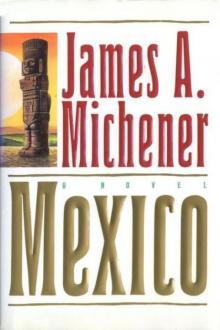 Mexico
Mexico The World Is My Home: A Memoir
The World Is My Home: A Memoir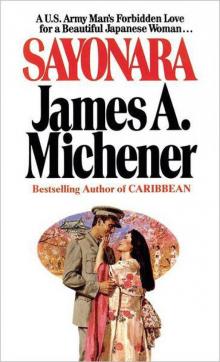 Sayonara
Sayonara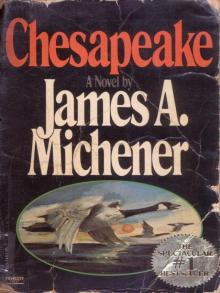 Chesapeake
Chesapeake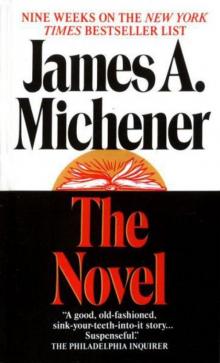 The Novel
The Novel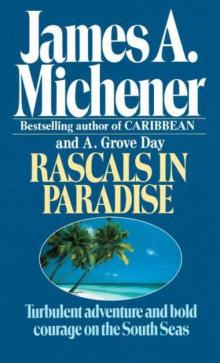 Rascals in Paradise
Rascals in Paradise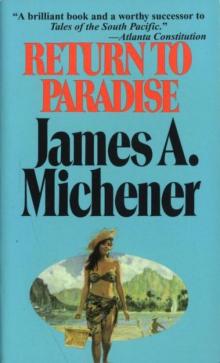 Return to Paradise
Return to Paradise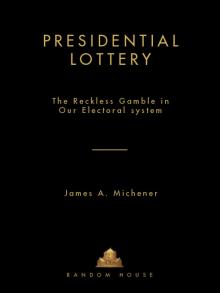 Presidential Lottery: The Reckless Gamble in Our Electoral System
Presidential Lottery: The Reckless Gamble in Our Electoral System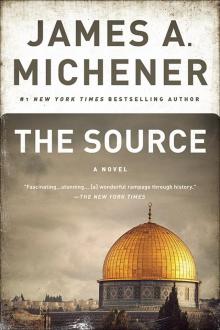 The Source
The Source Poland
Poland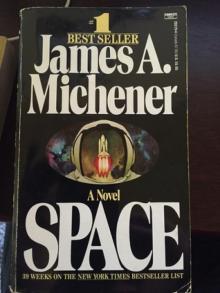 Space
Space Caravans
Caravans Creatures of the Kingdom: Stories of Animals and Nature
Creatures of the Kingdom: Stories of Animals and Nature Iberia
Iberia Hawaii
Hawaii The Watermen: Selections From Chesapeake
The Watermen: Selections From Chesapeake Report of the County Chairman
Report of the County Chairman The Covenant
The Covenant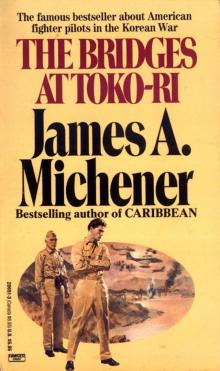 The Bridges at Toko-ri
The Bridges at Toko-ri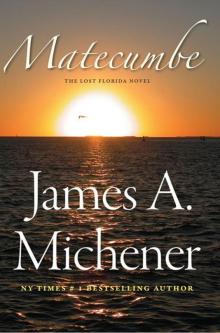 Matecumbe
Matecumbe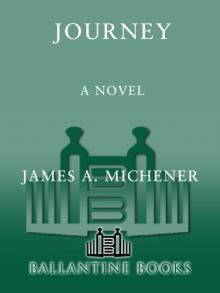 Journey: A Novel
Journey: A Novel Centennial
Centennial Sports in America
Sports in America Texas
Texas Miracle in Seville
Miracle in Seville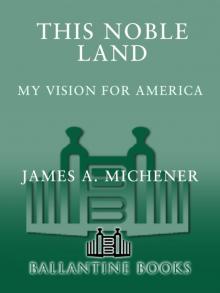 This Noble Land: My Vision for America
This Noble Land: My Vision for America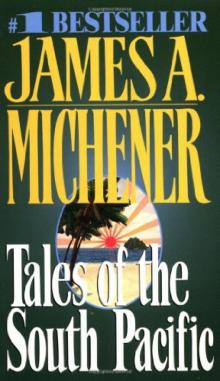 Tales of the South Pacific
Tales of the South Pacific Bridges at Toko-Ri
Bridges at Toko-Ri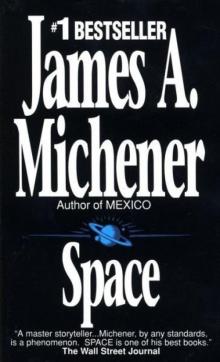 Space: A Novel
Space: A Novel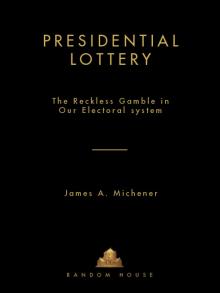 Presidential Lottery
Presidential Lottery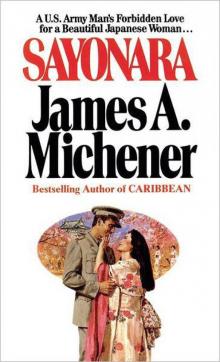 Sayonara: A Novel
Sayonara: A Novel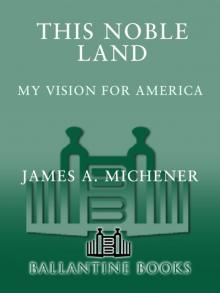 This Noble Land
This Noble Land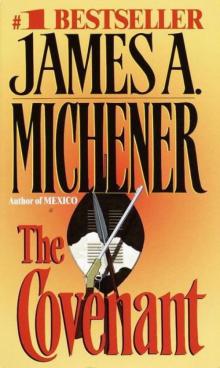 The Covenant: A Novel
The Covenant: A Novel Miracle in Seville: A Novel
Miracle in Seville: A Novel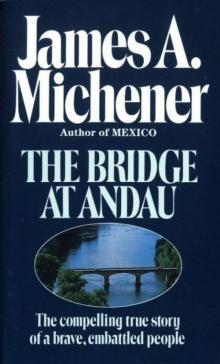 The Bridge at Andau
The Bridge at Andau Source
Source The Source: A Novel
The Source: A Novel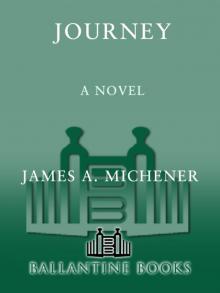 Journey
Journey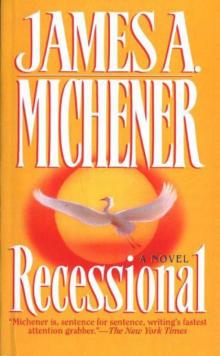 Recessional: A Novel
Recessional: A Novel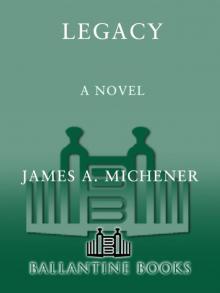 Legacy: A Novel
Legacy: A Novel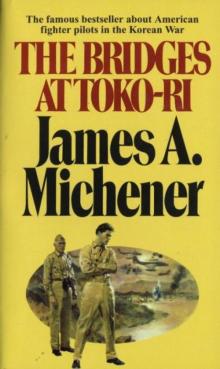 The Bridges at Toko-Ri: A Novel
The Bridges at Toko-Ri: A Novel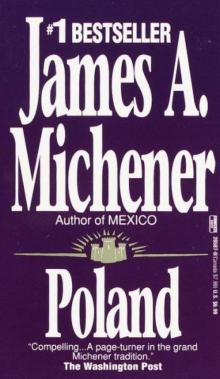 Poland: A Novel
Poland: A Novel